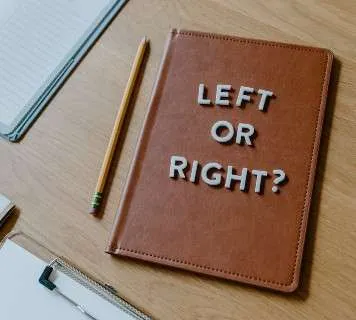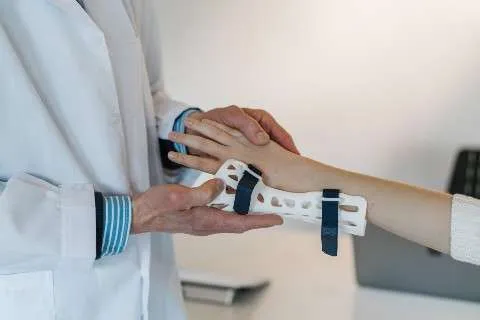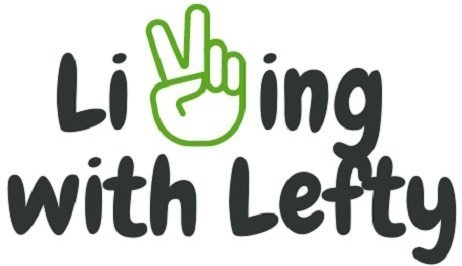Many talented artists and figures across history were known to be left handed. This includes musicians such as Jimi Hendrix and Paul McCartney, and sports players such as Babe Ruth and Lefty Grove. These individuals made strides in their respective fields despite the hurdles they faced as lefties.
If you were born right-handed, you may be wondering, “Can you teach yourself to be left handed?” The simple answer is yes. You can certainly become more proficient at using your left hand in different tasks and activities. However, becoming proficient in this area does not switch your brain’s configuration or your natural preference. Let’s examine the reason for this in more detail below.
Table of Contents
Can You Become Left Handed Later in Life?
Becoming left-handed later in life isn’t really possible, but you can become more proficient using your left hand for different activities or you can learn to be left handed for some tasks. This is because hand preference is believed to be innate rather than something that is learned.
What Causes a Person to be Left Handed?
So what causes someone to be left-handed or right-handed? Some key factors that influence handedness include:

Genes
Genes play a vital role in determining handedness. However, their role isn’t as straightforward as simply saying you will be left-handed if one or both of your parents were left-handed.
Medical experts currently believe that humans have two genes that control handedness. One of these is “dextral” while the other is “chance”. Being born with the dominant dextral gene means you will likely be right-handed. Being born with the chance gene means you could be either right-handed or left-handed.
The chance gene is less likely to occur than the dextral gene. This explains why the majority of the population is right-handed.
Season of Birth
Some scientists believe that the season in which you are born may influence your handedness. Studies have observed a consistent trend that shows left-handed people are more likely to be born between March and July than in the months between August and February.
The exact reason for this trend has yet to be determined. However, some researchers believe that seasonal variations in the incidence of infectious agents may be one of the factors that contribute to this observed phenomenon.
Environment
Earlier, we mentioned that handedness is innate rather than something that is learned. However, the environment you grew up in may play a significant role in determining which hand you perceive to be your dominant one.
For example, many cultures encourage children to perform tasks such as holding cups or cutlery using their right hand. This may lead to them becoming more proficient with their right hand. Note that this leads to proficiency, but has no bearing on their innate hand preference.
A person who becomes proficient with their right hand may still have an innate preference to use their left hand in certain situations. For example, a left-handed person will reflexively catch a flying object with their left hand if surprised, even if they are skilled with using their right hand.
The above factors tell us that right-handed people can certainly become more proficient with using their left-hand. However, their innate hand preference will still remain right-handed.
Can You Teach Yourself to Write Left Handed?
Writing is arguably one of the hardest activities to master with your left hand. It requires a good grip, coordination, as well as consistency. However, it is possible to become fairly skilled at writing with your left hand with enough practice.

Reasons for Using Your Left Hand When Right Handed
You may be wondering why a right-handed person may want to start using their left hand more. Some common reasons include:
Adjusting or Recovering Following an Injury
People that have injured their dominant hand may need to use their other hand for tasks. This usually occurs if the injury is severe or causes them pain when they attempt to use their dominant hand.

If the damage to their right hand is permanent, such individuals may have no choice but to become proficient with using their left hand.
Playing an Instrument
Playing an instrument generally requires great coordination using both hands. However, your handedness may still influence how good you become at playing a particular instrument. For example, right handed people typically hold a guitar’s frets with their left hand and strum the strings using their dominant hand. This is because the dominant hand plays the important role of keeping rhythm and striking the strings with the right amount of force. A left hander may prefer to play a mirror image of a right-handed guitar.
Similarly, if you play violin right-handed but develop a recurring injury in your fingering left hand at some point, you may want to learn to play the violin left-handed or fingering with your right hand to continue.
Becoming more proficient with your left hand can be especially useful if you aspire to learn the piano. The piano is one of the few instruments where the right hand and the left hand are expected to perform similar roles. Most compositions feature fast or complex right hand parts for the melody and simpler left hand parts for the chords. However, certain compositions may prioritize the left hand parts, thereby forcing you to improve your left hand skills when learning the piece on piano.
Exercising the Right Part of Your Brain
Experts believe that handedness also plays a role in determining which regions of your brain you utilize when processing information. Right-handed people tend to use their left brain more. This part of your brain handles “logical” tasks such as reading, writing, and mental calculations.
Left-handed people tend to use their right brain more. This part of the brain processes information visually and intuitively. It is believed that right-brained individuals lean towards art and tend to be more creative and expressive than their left-brained counterparts.
In some scientific circles, there is a belief that a right-handed person may be able to utilize some of this “right-brain” creativity if they begin using their left hand more.
Are There Benefits to Writing With the Left Hand If You’re Right Handed?
Writing with your left hand if you are right handed may be beneficial in some ways. This activity could potentially strengthen neural connections as it activates the right-side of your brain. This is backed up by a study that found that participants displayed stronger connections between both brain hemispheres after tracing shapes with their left hand for 20 minutes for 10 days.
Is Becoming Ambidextrous Harmful?
You may be wondering if there are any potential downsides associated with becoming ambidextrous. There is no concrete evidence to suggest that learning to use your left hand more will be harmful for a right handed person. However, a recent study found that people who were born ambidextrous were more likely to experience mental health and learning difficulties later in life.
Note that the above study refers to individuals who were born ambidextrous, rather than individuals who taught themselves to become ambidextrous. With this in mind, there likely isn’t any harm in wanting to train yourself to be ambidextrous.
How to Become Left Handed When You Are Right Handed
As mentioned earlier, you cannot become left-handed if you were born right-handed. However, you can become more proficient with using your left hand for different activities. Some tips to improve your left hand skills include:
Eating With Your Left Hand
The simplest and most straightforward task you can accomplish with your left hand is eating. Note that this isn’t as easy as you may think it is. You may initially make a mess when you attempt to hold a spoon and eat cereal or soup. The trick is to take it slow until you become more confident with this basic task.
You can then attempt more advanced tasks such as holding chopsticks and picking up food with them.
Brushing Your Teeth With Your Left Hand
Another great tip is to try brushing your teeth using your left hand. Grip your toothbrush with your left hand and attempt to brush your teeth as you normally do. You may find this awkward at first and struggle to find the right position and rhythm for the brush in your mouth. However, this should become easier as your left hand adjusts to this task. Just be sure to be gentle or you may damage your gums in the process.

Cooking With Your Left Hand
Once you are fairly confident with your left hand, you can attempt to utilize it while cooking. Pull out your cutting board and grab your favorite kitchen knife. Be sure to find a comfortable grip that offers the right control before practicing by cutting vegetables. This activity can be dangerous, so be sure to go slow in the beginning and pick foods that don’t make your knife slip. Make sure that you pick a double bevel knife with an egonomic grip and not a right-handed single bevel knife.
Using a Mouse with Your Left Hand
To improve your fine motor skills with your left hand, try using a mouse with your left hand. You don’t have to buy a new one just for this, as any mouse can be programmed to switch the right and left button functions around. This way your index finger is still used for the traditional “left click”, while your middle finger is used for the right click.
Non Dominant Hand Writing Exercises
The following left hand writing exercises should be able to help you improve your skills:
- Learn to grip a pen or pencil by observing how you would do it with your dominant hand.
- Write down your name several times and find a consistent handwriting style.
- Draw circles and draw straight lines.
- Write complete sentences on blank sheets of paper and attempt to keep them straight.
The exercises mentioned above may sound too easy. However, you will soon learn that even basic writing skills are difficult to develop with a non-dominant hand. You should prioritize consistency rather than speed when following the above exercises. You may also find that you run into some left-handed writing problems that most right-handers never encounter. Once you have found a writing style you are consistent with, you can focus on speeding up.
How Long Does it Take to Learn to Write With Your Non-dominant Hand?
While it may take a long time for your left hand to equal the skills of your right hand, it should take less than two months for your left hand to become very nearly as proficient. This, of course, will require you to practice consistently for those two months.
